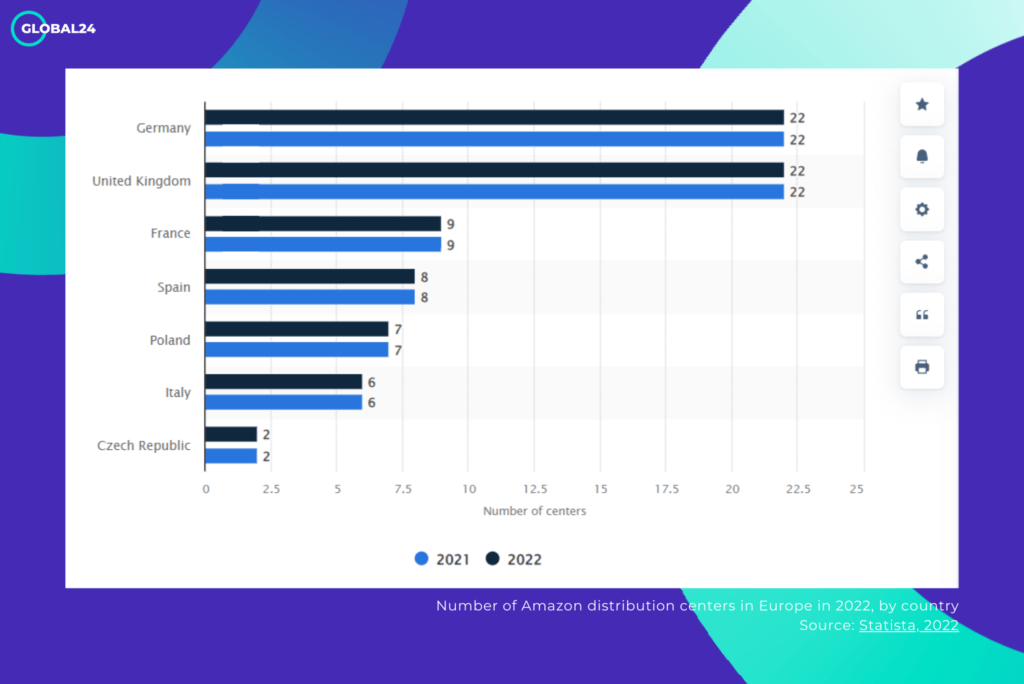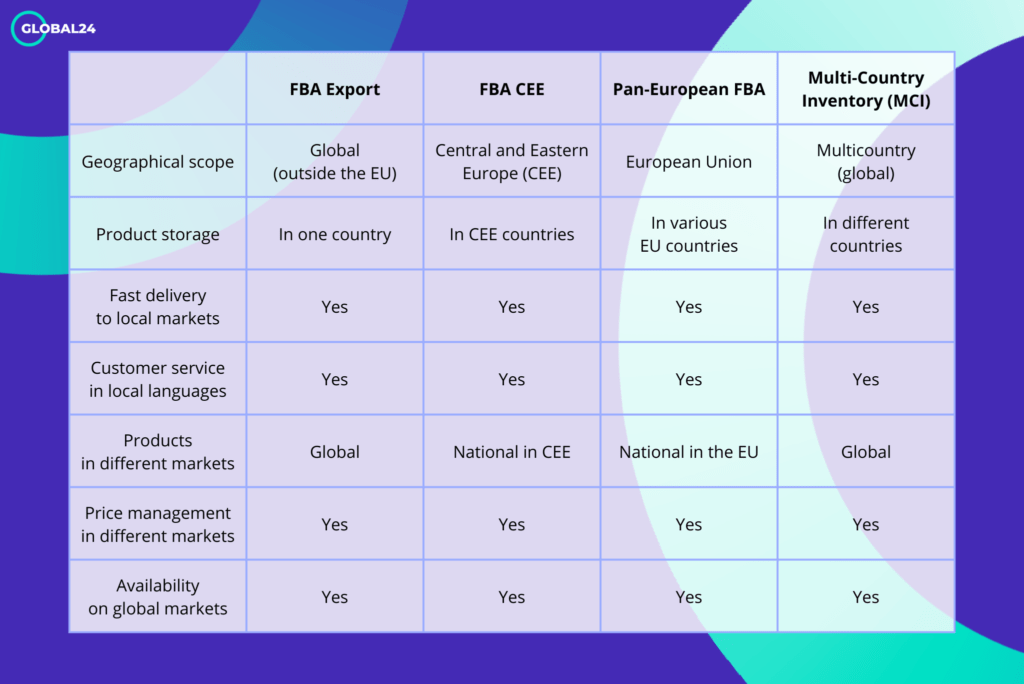Choosing a sales and logistics model on Amazon: comparing FBA and FBM
In the world of e-commerce, especially on marketplaces such as Amazon, one of the key choices for merchants is the decision regarding the sales and logistics model. The two main options are Fulfillment by Amazon (FBA) and Fulfillment by Merchant (FBM), each with its own unique advantages and disadvantages.
The choice between FBA and FBM depends on many factors, including the type of product, business strategy, as well as the preferences and logistical capabilities of the merchant. Both FBA and FBM have their unique benefits that may be better suited to specific needs and business goals.
Fulfillment by Amazon (FBA) and Fulfillment by Merchant (FBM) programs are the two main order fulfillment methods on the Amazon platform. Each offers certain conveniences but also imposes requirements on merchants. The choice between FBA and FBM depends on various factors such as the type of products, the merchant’s business model, as well as preferences regarding logistics and customer service.

Publication date:
Update date:
16.07.2024
Fulfillment by Amazon (FBA)
This is a model in which Amazon takes over logistical processes, including storage, packaging, shipping, as well as customer service and returns handling. This model offers merchants significant benefits such as access to Prime, increased customer trust, and potentially higher rankings in Amazon search results. However, it also comes with higher fees and storage limitations.
Check also our article: Amazon Vendor – what is it and how it will change from 2024?
Within FBA, there are several additional options that focus on specific regions. These include FBA CEE, FBA Export, European Fulfillment Network (EFN), Multi Country Inventory (MCI), PAN-EU FBA, and Amazon COS. What do these abbreviations mean?
FBA CEE refers to using the Fulfillment by Amazon service in the Central and Eastern Europe region, allowing merchants to access the broad CEE market while utilizing Amazon’s logistics infrastructure and customer service. In this case, goods are stored in logistics centers in Poland, Czech Republic, or Germany.
CEE stands for “Central and Eastern Europe,” referring to the geographical region encompassing Central and Eastern European countries. This region may include countries such as Poland, Czech Republic, Hungary, Romania, Bulgaria, or Ukraine. CEE is often considered an area with growing economic potential and consumer market, making it particularly attractive for e-commerce merchants.

FBA Export: “Fulfillment by Amazon Export” is a service that enables merchants to use the FBA program to deliver their products to international markets. With FBA Export, merchants can expand their business beyond the country where they registered their FBA account and sell products in foreign markets serviced by Amazon. There is no limitation to a specific territory.
Key benefits of FBA Export for merchants include:
- Utilizing Amazon’s international logistics – it allows merchants to ship their products from FBA warehouses in one country to FBA warehouses in international markets, handling logistics and delivery to those markets.
- Customer service support – Amazon offers customer support in the local language in international markets, assisting in problem resolution and order management from customers in different countries.
- Currency conversions and price management support – Amazon automatically converts the product price into the local currency in the target market, facilitating customer purchases. Meanwhile, merchants have the ability to adjust their product prices in different markets based on pricing preferences and competition in that region.
European Fulfillment Network (EFN) also allows merchants to use Amazon’s logistics and warehouse infrastructure in Europe to fulfill orders from customers in various European countries.
A related model is Multi Country Inventory (MCI), which enables merchants to store their products in multiple countries simultaneously, facilitating order management from customers in different international markets. MCI allows merchants to integrate their inventory across different countries, speeding up delivery and optimizing costs.
PAN-EU FBA also enables merchants to store their products in Amazon warehouses across the entire European Union (EU) and fulfill orders from customers in all EU markets.
The last of the mentioned models is Amazon COS – Call Off Stock. In this model, the merchant stores their products in Amazon’s logistics centers (via the Fulfillment by Amazon program) but does not transfer ownership rights to the retail giant. Therefore, they do not need to register it for VAT until the moment of selling the goods.
FBA Export, FBA CEE, Pan-European FBA, and Multi-Country Inventory (MCI) seem very similar, so to highlight their differences, we summarize them in the table below.

Fulfillment by Merchant (FBM)
This model allows merchants to independently manage the entire logistics process. It provides greater control over inventory and the shipping process. It may be beneficial for products with irregular sizes or special warehousing requirements. However, it does require greater commitment from merchants and potentially higher logistics costs.
Choice between FBA and FBM dependent on sales strategy
The decision to choose FBA or FBM depends on individual merchant preferences. Those who value convenience and want to take advantage of the Amazon Prime program will much more willingly opt for FBA. Conversely, merchants who prefer direct control over their business, as well as those with custom products, will probably lean towards FBM. However, it’s important to remember that there have been many changes in the Amazon Prime program lately, and even when selling FBM, you have the opportunity to obtain the Amazon Prime badge. More about these changes HERE.
Key importance here will be the strategy of the planned sales, undoubtedly influenced by the type of products and the level of costs acceptable to the merchant. Amazon FBA allows for achieving a significant level of sales without having one’s own logistics base – delivering products directly from the manufacturer to the giant marketplace’s warehouses. However, it limits the ability to verify the goods and makes every mistake by the manufacturer, incorrect product labeling, etc., potentially resulting in significant costs, as it may not be detected by the warehouse staff as quickly as it would in the FBA model and in direct control over shipments.
On the other hand, there is the reach and the possibility of easily reaching a large group of interested customers. It is also not insignificant the ability to conduct business without organising warehousing on one’s own.
If you are looking for a logistics partner on Amazon who will adapt to your processes and solutions, check out how Global24 works and get in touch with us!
Categories:
Do you want to be up to date?
Subscribe to the newsletter
Subscribe to the CROSS-BORDER LETTER newsletter! Learn about news, tricks and secrets in foreign logistics. Check how to sell abroad and achieve more benefits.





